Balancing the temporary nature of a façade with ever-increasing environmental and safety requirements poses a formidable challenge for façade designers. Design engineer Paul Tarand explores how we can design and construct in ways that improve a façade’s sustainability within this industry climate.
This article is the first within a series exploring what’s coming next for modern façade design.
During the lifespan of a well-designed building, even a modern façade typically requires multiple replacements. But these replacements often occur prematurely. Designed lifespans, replacement cycles and leasing events are mostly not optimally coordinated, while regulation is meanwhile ever-tightening.
In recent years, the decision to implement a façade replacement has typically been justified through the aim to improve energy performance, with the simultaneous benefit of upgrading the aesthetic. It is indeed a fact that the façade’s energy performance will deteriorate over time, as its gaskets and seals weather. Indoors, reduced weather-tightness can affect the health and wellbeing of occupants by causing cold surfaces, unwanted draughts, mould concerns, foggy windows, and overall productivity loss. On the exterior meanwhile, the façade’s aesthetic has a high impact on the property’s value, and on its leasing potential.
At some point during the façade’s life, its replacement will start to make good economic sense. But given the pressure of climate change, as designers and clients, we should feel an imperative to challenge any incorrect point in time for implementing such wholesale replacement. We should moreover consider the carbon benefits of refurbishment, or even improvement, as preferred alternatives.
Amidst these considerations, while most retrofits can be well predicted, we may also feel influence from unexpected sources. A ‘black swan event’, such as the Grenfell Tower fire, may trigger a surprise impact though its sudden regulatory change, and our response must be equally measured.
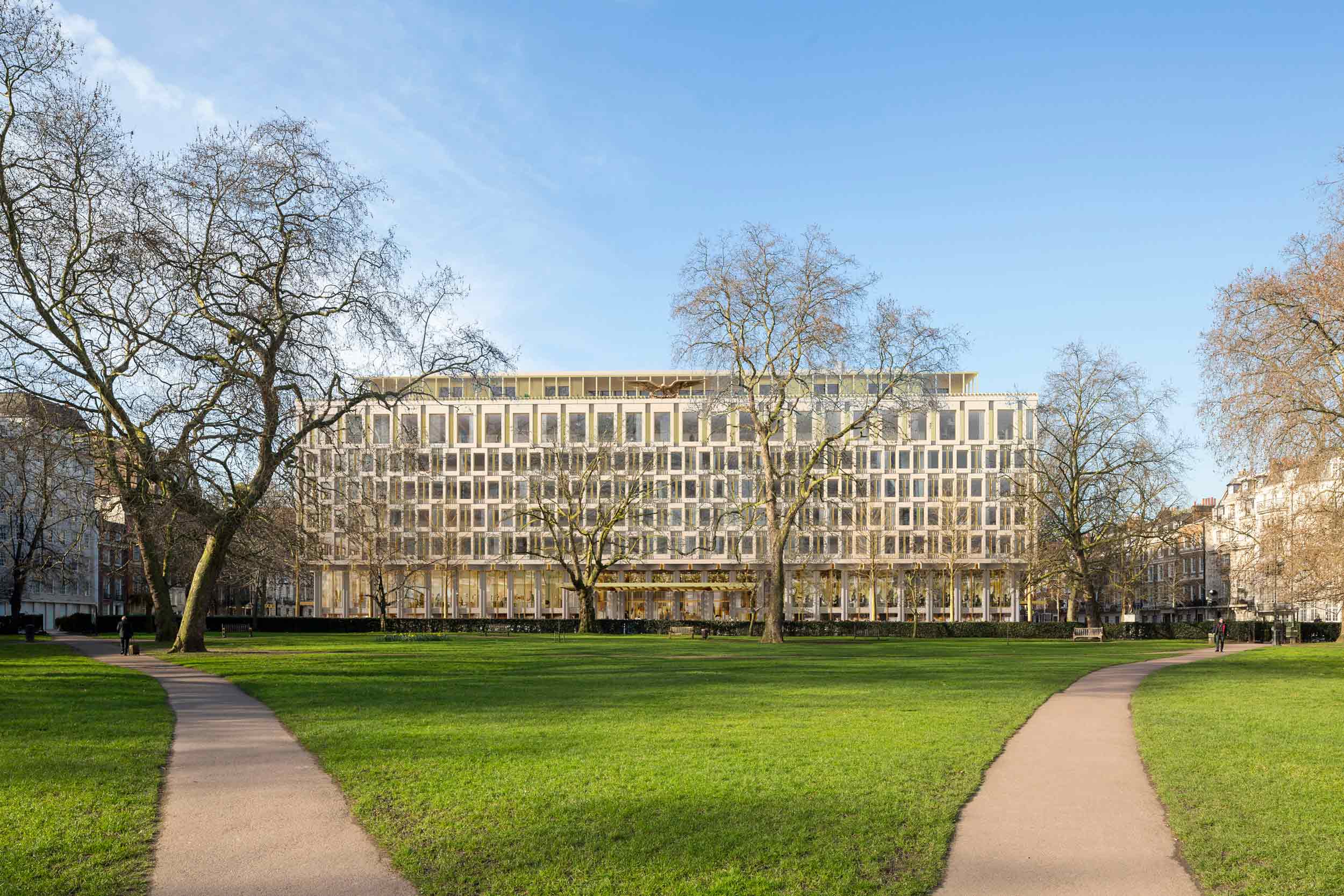
Stone façade of the historic US embassy in London will be retained in conversion to a luxury hotel.
When we find, having exhausted the opportunity for refurbishment, that a façade is at the end of its life and therefore must be replaced, the façade is deconstructed. At this point, the sustainability credentials of its design are revealed through the fate of its materials and components, which are recovered through this process. The ultimate climate effects of the production, use and disposal of these items are commonly measured as embodied carbon.
As the energy use of new construction has plummeted during the past decade, the industry focus has shifted to embodied carbon as a means to further reduce environmental impact. As a proxy for the use of fuels and materials, this reduction of embodied carbon saves not just the environment, but also the project’s cost.
As designers, we apply embodied carbon studies during several project stages to support our decision-making – from selecting materials to specifying sustainably-supplied products and accounting for potential reuse and recycling – when evaluating design options.
This potential for reuse, which also known as ‘circularity’, is an essential factor within applications where component life cycles are short or where large quantities of material are used. This circularity must be embedded at the design stage. Circular façade design accordingly considers a range of factors, from material choices and manufacturing processes to component durability, sourcing, finishes, the ease of disassembly, and the potential for reuse and recycling.
On the other hand, the breadth of applicable solutions is constrained by a project’s many design criteria, including the architectural intent, local regulations, environmental targets, and the site’s climate, plus security, fire, access, and cost. Holistic early-stage consideration is essential to maximise circularity. Any reuse of existing structures and components for example can significantly benefit the project’s historical, environmental and financial value.
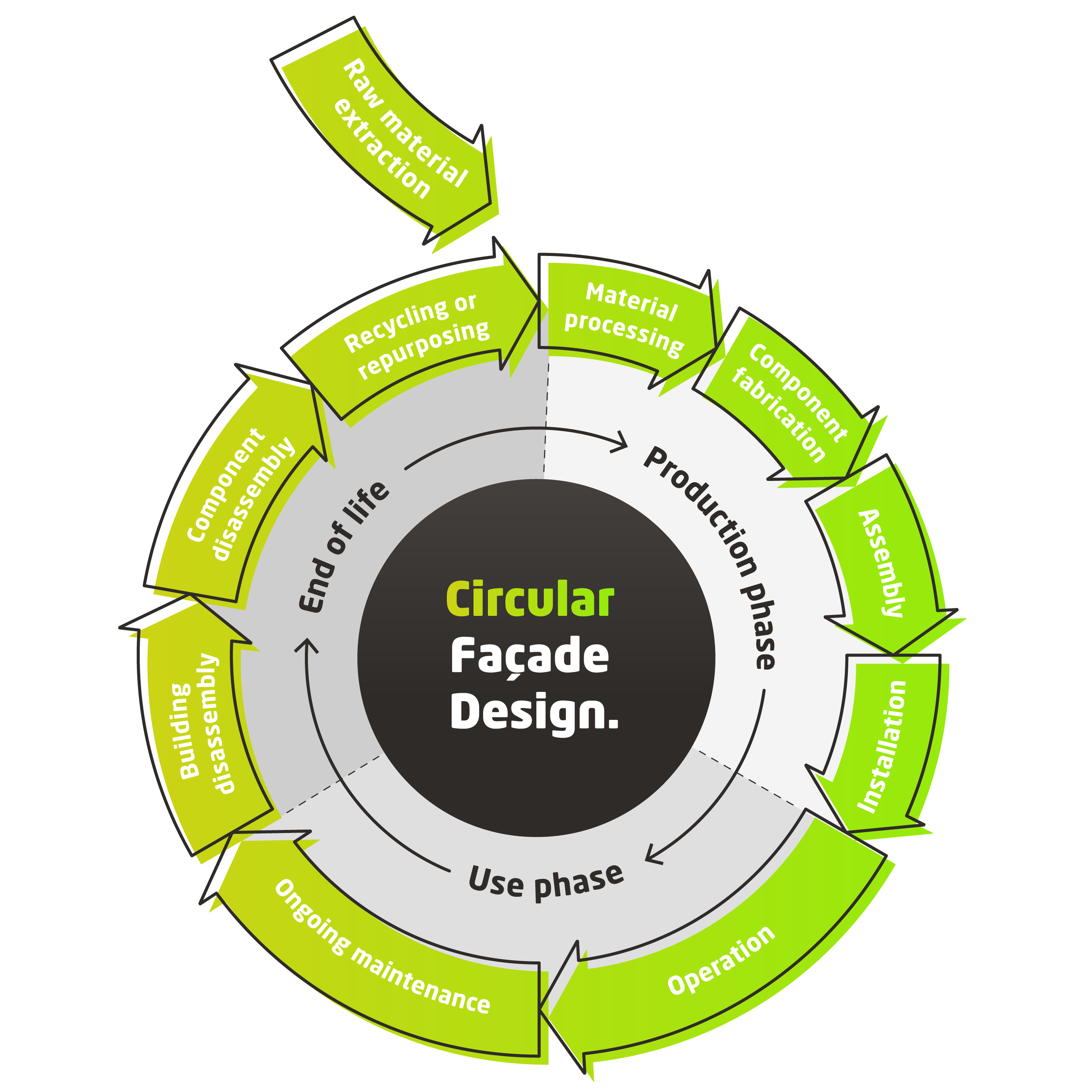
Complex façade geometries and expensive finishes, as may be characteristic of contemporary design, present interesting sustainability-optimisation challenges. Iconic but resource-intensive designs for example may in fact result in remarkably low lifecycle emissions. This is because, while the initial build of a highly bespoke design carries inflated emissions, the design quality will most probably guarantee the building an extended lifespan and thus a greater value when compared with a run-of-the-mill solution. In other words: the materials’ contribution to overall emissions decreases with the building’s increased longevity.
Nonetheless, given the timeframe associated with the climate emergency, which is already happening now, we must be judicious in deciding how to control carbon embodiment now. So, while whole-life consideration remains a critical design tool, it must sit alongside the perhaps more pressing, immediate imperative to diminish the project’s initial carbon content.
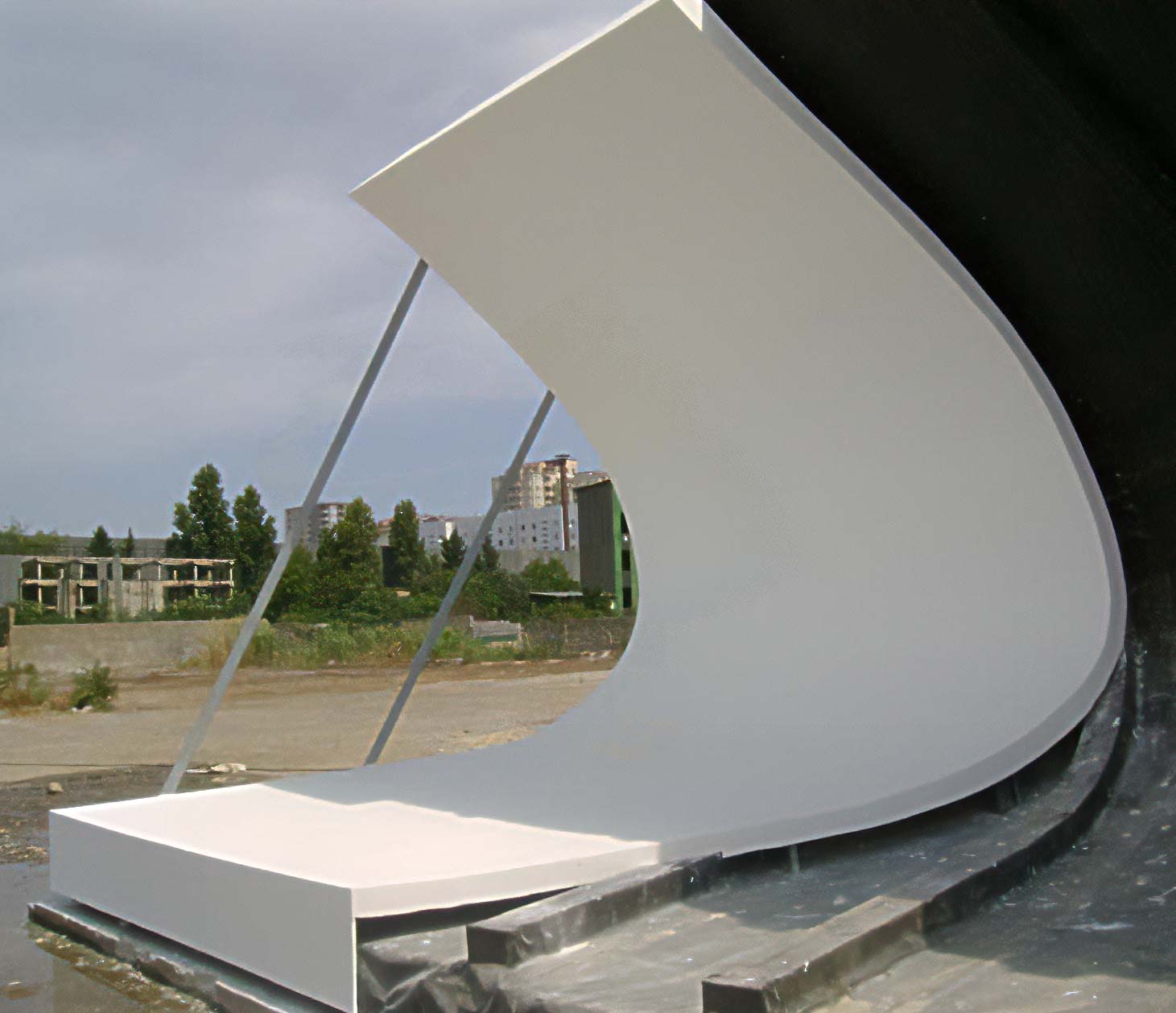
Mock-up of a bespoke façade panel for the Heydar Aliyev Centre.
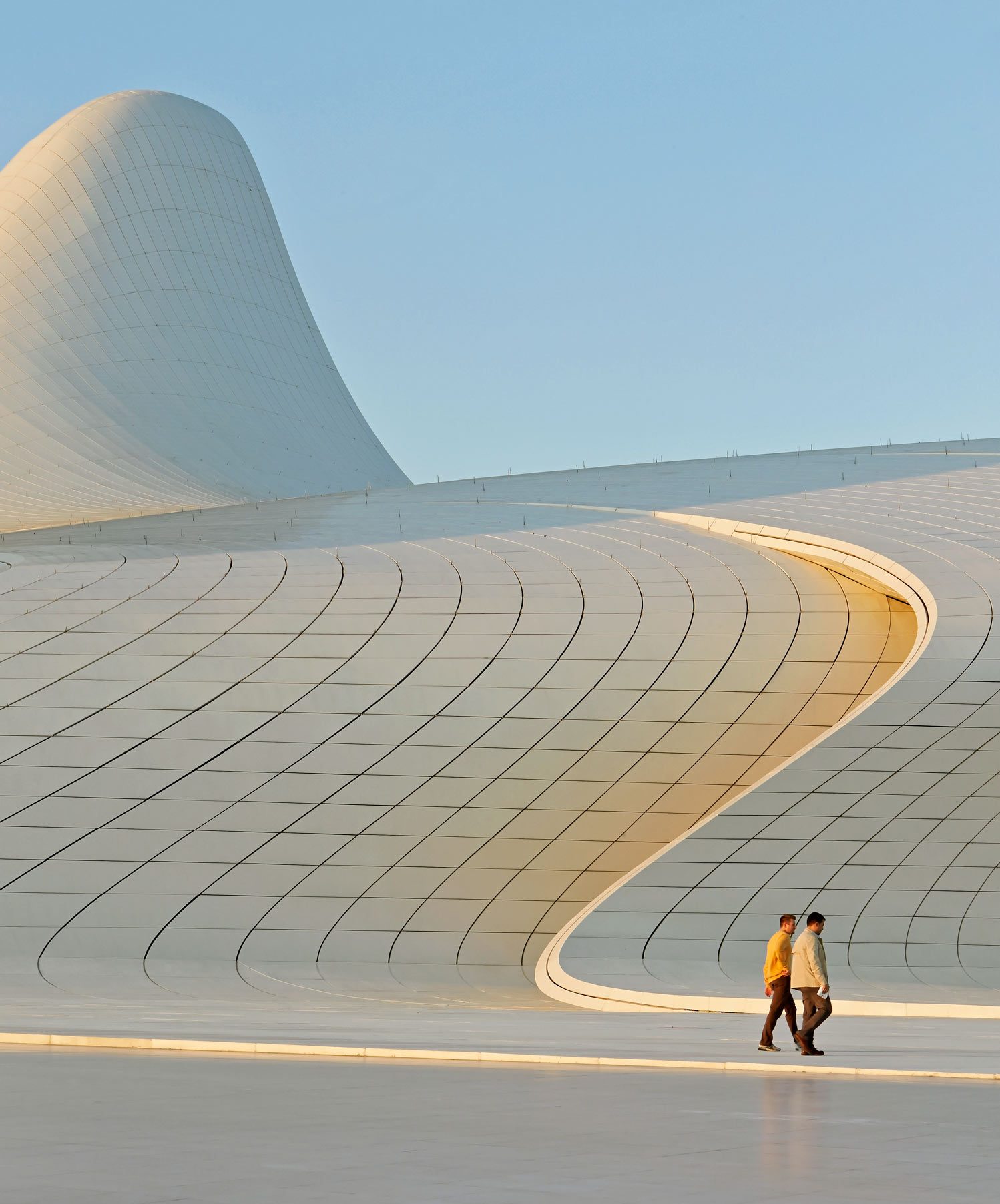
The Heydar Aliyev Centre in Baku, Azerbaijan, has a highly-complex, free-flowing façade.
This phenomenon has been studied in skyscrapers – a class of buildings known for long lifespan. In Manhattan, the average age of an office building nears 68 years, while 48% of the local building stock was completed pre-WWII.
The embodied carbon of these buildings mainly comes from the emissions of interior fit-outs. Under these circumstances, the finishes alone may add up to 40% of lifetime embodied carbon following 75 years of use. The structure meanwhile will end up contributing only around 20% of the embodied emissions and whole-life costs.
New York’s Empire State Building offers a recent example of this phenomenon. The 89-year old icon received a massive $165m refurbishment in 2019, ensuring its presence in the New York skyline for the foreseeable future.
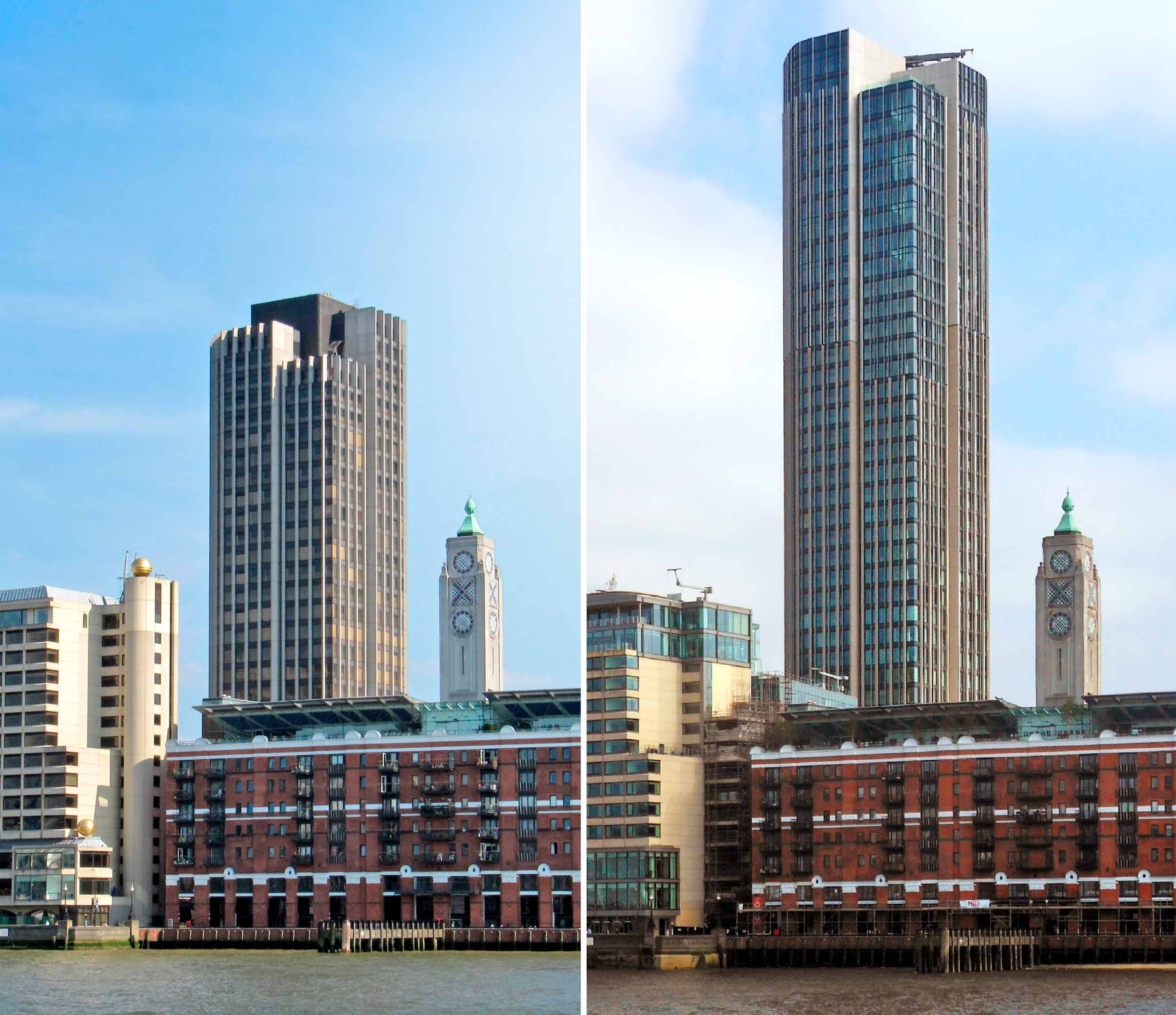
The South Bank Tower in London was redeveloped by expanding on the existing structure.
Applying circular design principles for façades inherently promotes greater resilience and longevity, and benefits stakeholders across the board, including the users and owners, and the environment at large. So how can we improve lifespans and circularity, cost-effectively?
By choosing more sustainable materials and products, the designers can promote their preferred manufacturers, creating a positive feedback loop wherein the market adapts to this demand. Specifying products made from recycled materials can go a long way towards reducing the need for primary resource extraction – as well as reducing cost.
Experimenting with high-impact materials can help to scale these and promote their use on smaller projects too. Such materials include free-form UHPC panels, bio-material-based curtain wall elements, stone-brick veneers, terracotta, and even fibre-reinforced recycled plastic.
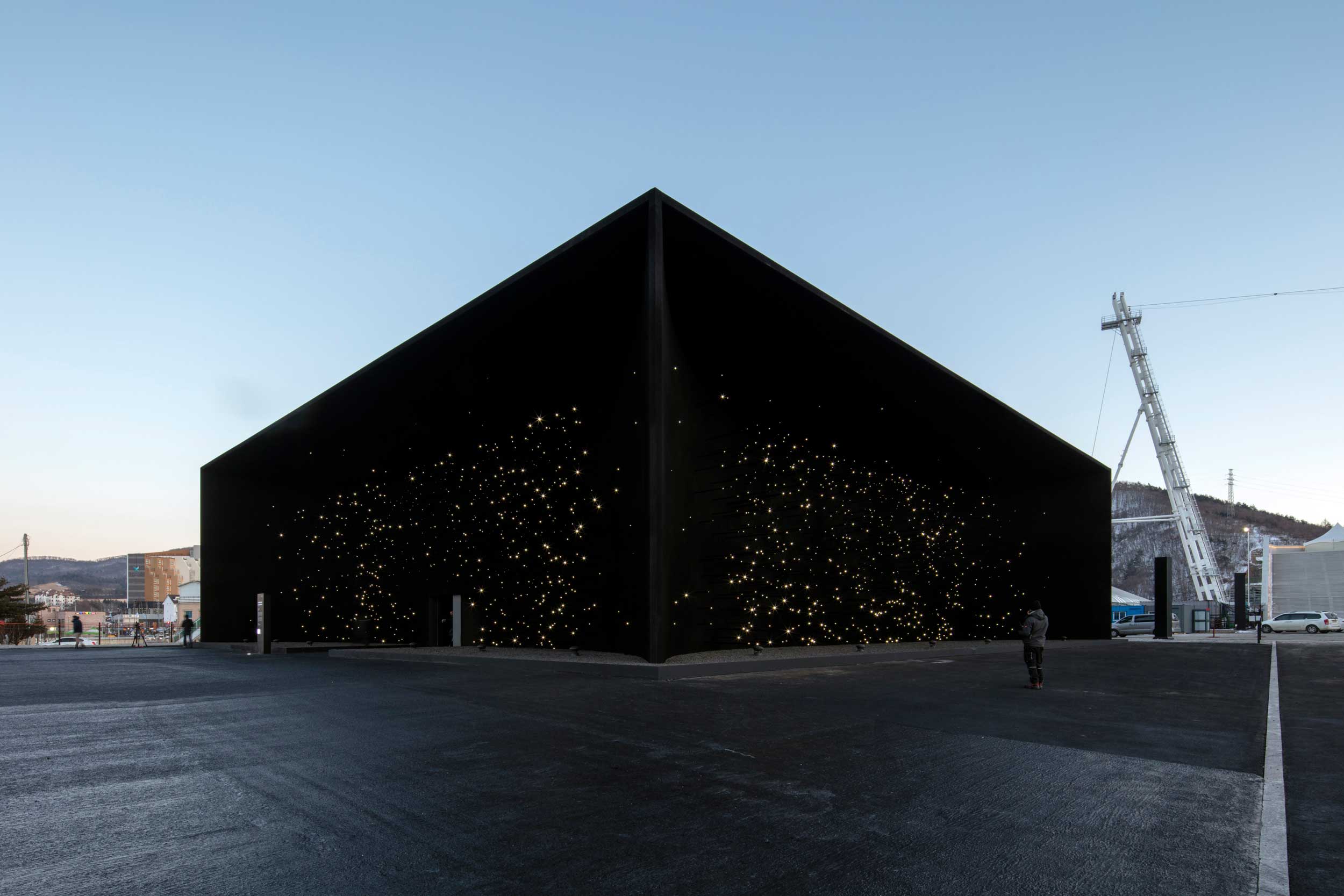
Vantablack the darkest artificial substance in existence was used to produce the starfield effect on the Hyundai Pavilion.
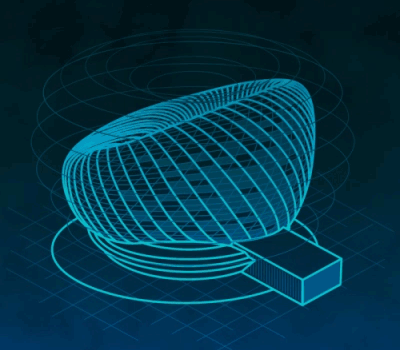
All of these insights and ideas are already being explored by AKT II Envelopes, as part of designing high-performance façades sustainably.
To learn more about the value that AKT II Envelopes brings to projects the world over, get in touch to see how we can help.
AKT II Façade Engineering 2–4 Whitworth
2–4 Whitworth White City
White City  NXQ
NXQ Luton Power Court
Luton Power Court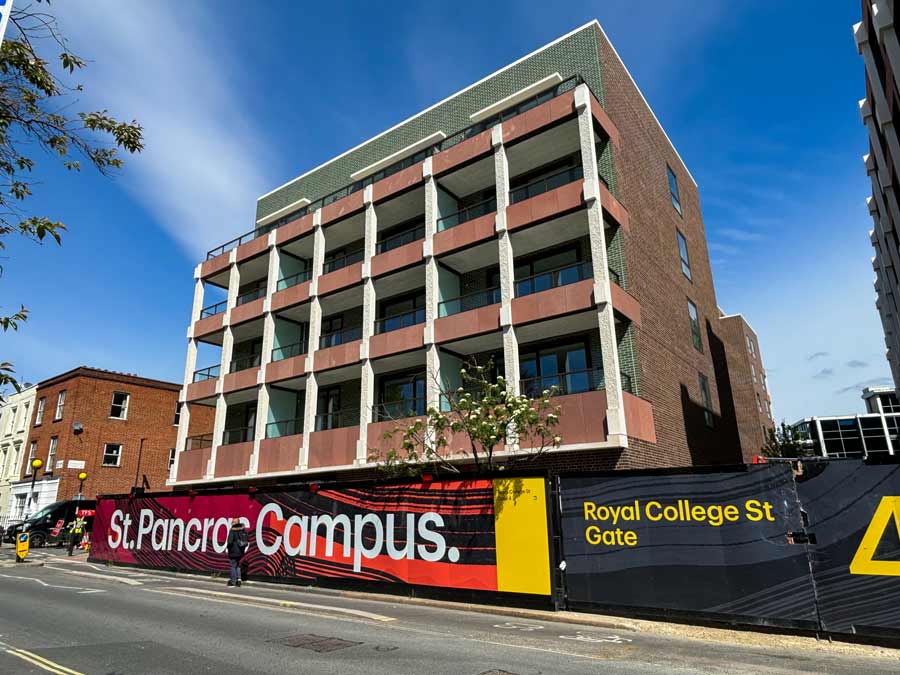 St Pancras
St Pancras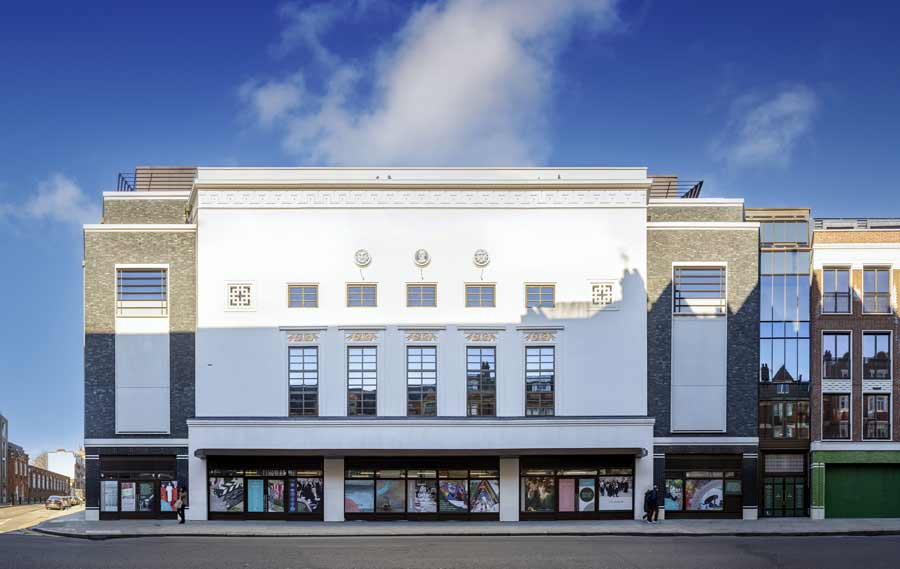 The
The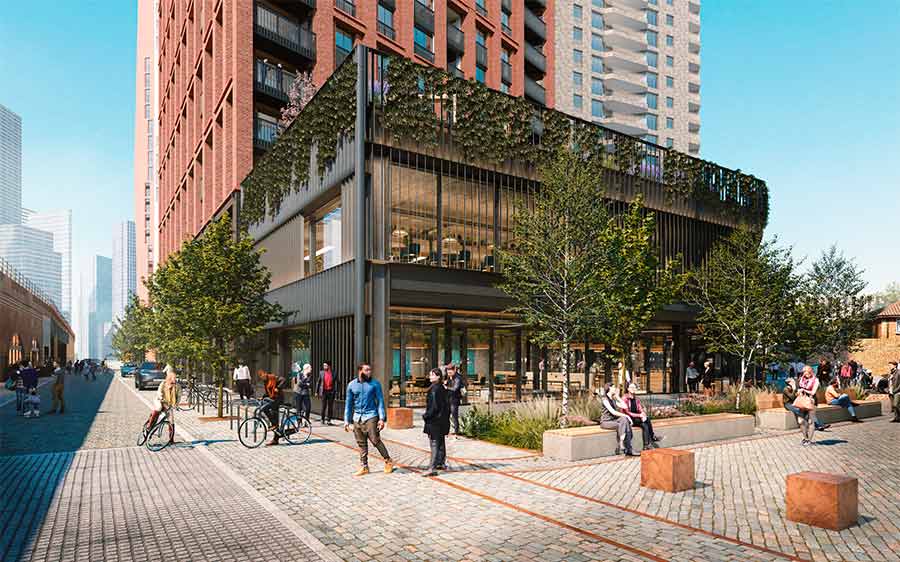 Apex
Apex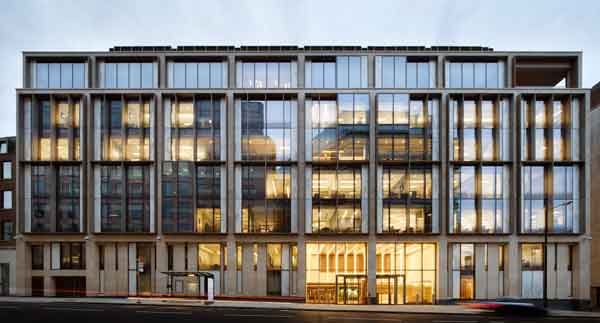 17 Charterhouse
17 Charterhouse